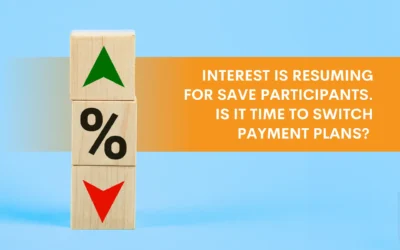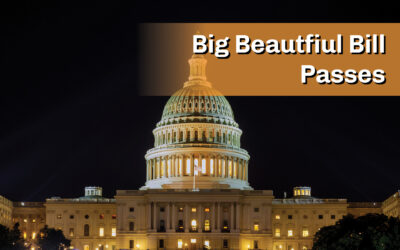The student loan marketplace continues to provide headlines, and we’re excited to share more good news for borrowers and qualified employers of the PSLF program (which has ballooned to over $14B). Over the past year we’ve told you all about the PSLF Waiver, the PSLF Overhaul, and the IDR Waiver. So what comes next? Well, the IDR Overhaul of course! If you’re new to this nomenclature, admittedly, what we’ll share here will not sound exactly simple… but that’s why you have us to help you navigate it all.
When President Biden announced his student loan relief plans back in August of 2022, he previewed a new repayment plan that would be coming in 2023. While the highlights were notable, we really needed the fine print to determine which borrowers would benefit from it. Those details were finally revealed on January 10th. The “new” plan is effectively an overhaul of the current Revised Pay As You Earn (REPAYE) plan, along with other new rules for the entire family of IDR plans. Here are the notable changes:
- Poverty Level Deduction: The current 150% poverty level deduction will be raised to 225%. This calculation reduces a borrower’s Discretionary Income (DI)… which means lower payments for nearly all borrowers.
- Payment Formula: Payments will be equal to 5% of discretionary income on undergraduate loans. Those with graduate loans will keep paying 10%. Those with a mix of undergraduate and graduate will have a weighted average between 5% and 10% depending on the breakdown of their loan portfolio.
- Example: You have $100k in student loan debt, $30k from undergrad and $70k from a graduate school. Your discretionary income (DI) is $60k based on your family size. Since your undergrad loans represent 30% of your total debt, your monthly payments will be 8.5% of your DI, or $425/month.
*The cheapest plan today would cost $500/month.
- Example: You have $100k in student loan debt, $30k from undergrad and $70k from a graduate school. Your discretionary income (DI) is $60k based on your family size. Since your undergrad loans represent 30% of your total debt, your monthly payments will be 8.5% of your DI, or $425/month.
- Interest accrual: When applicable, REPAYE currently eliminates 50% of any accrued interest which remains after a borrower’s payment is applied each month. The new REPAYE plan will eliminate 100% of that interest. This particular provision is a game changer for medial residents and others with high DTI ratios.
- Income Adjustments for Married Borrowers: One of the biggest drawbacks to the existing REPAYE plan is that it penalizes married borrowers by using their joint income to calculate the payment amount. The proposed rules will allow borrowers who file their taxes MFS to exclude their spouses’ incomes.
- Recertification: Borrowers will have the option to opt-in and have their payments automatically recertified (recalculated) using their tax return information. This is convenient. But use caution. Tax returns are not always the most advantageous way to document income.
- New Forgiveness Terms: Currently, REPAYE offers taxable loan forgiveness after 20 years for undergraduate borrowers and 25 years for graduate borrowers. The tax implications still apply, but the new forgiveness rules are as follows:
- 10 years for undergrad borrowers with loan balances of $12k or less
- 1 additional year for each $1000 between $12k and $22k
- 20 years for undergrad borrowers with $22k or more
- 25yr forgiveness for graduate borrowers
- Note this has nothing to do with PSLF!
- Payment Cap: Unfortunately, there is still no payment cap. The more you make, the more you will pay, without a ceiling.
Along with these enhancements to REPAYE Dept of ED also announced new rules pertaining to all IDR plans. One of those is restricting access to existing plans. While statue may not allow ED to instantly eliminate existing plans or force people to change plans, the economic incentive to switch into the new REPAYE plan will be impossible to ignore for many. Some key changes to existing plans:
- Only those already enrolled in PAYE will be able to use that plan once these changes take effect.
- The first IDR plan created back in 1995, Income-Contingent Repayment, will also be restricted, but those with Parent Plus loans will still be able to utilize it.
- Once you’ve made 120 payments under REPAYE you won’t be allowed to switch to IBR either.
Other changes include certain deferments and forbearances (NOT residency forbearance) counting towards forgiveness, consolidation no longer resets the forgiveness clock, and defaulted borrowers will now be allowed to enroll in IBR.
At the end of the day these proposed changes will positively impact many (if not most) borrowers, though staying in PAYE or switching to “New IBR” (more on that to come) may still have some long-term benefits for those with high incomes.
Update as of July 2023
As anticipated, the White House is using these IDR revisions as a Plan B after SCOTUS rejected Biden’s loan cancellation plan. The changes are being finalized as proposed above, with a couple of minor changes. The new REPAYE plan will be called the SAVE plan and will officially replace REPAYE on 7/1/2024. Also, married couples using the new MFS strategy will not be able to claim their spouse as part of their family size. This will, unfortunately, offset some of the savings.
The other thing we now know is the roll-out dates. Half of the REPAYE/SAVE provisions are going to be implemented this summer before payments resume:
- The increase in poverty level deduction from 150% to 225%
- The 100% interest subsidy
- The ability for married couples to use the MFS tax strategy
The other REPAYE changes detailed above, along with the phase out of the ICR and PAYE plans, will not go into effect until July 1st of 2024.
As always, contact us at Help@dwoq.com if you have questions. Better yet, sign up for your personalized student loan consultation here.
Brandon Barfield is the President and Co-Founder of Student Loan Professor, and is nationally known as student loan expert for graduate health professions. Since 2011, Brandon has given hundreds of loan repayment presentations for schools, hospitals, and medical conferences across the country. With his diverse background in financial aid, financial planning and student loan advisory, Brandon has a broad understanding of the intricacies surrounding student loans, loan repayment strategies, and how they should be considered when graduates make other financial decisions.





